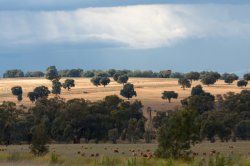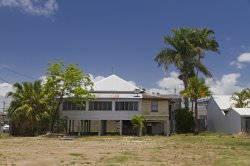Global warming website
 Photo credit: Under a high emissions scenario, Melbourne’s climate could end up more like Dubbo’s in New South Wales. Frans de Wit/Flickr, CC BY-NC-ND
Photo credit: Under a high emissions scenario, Melbourne’s climate could end up more like Dubbo’s in New South Wales. Frans de Wit/Flickr, CC BY-NC-ND
What will Australia look like in 2050? Even if we significantly reduce our greenhouse gas emissions as under an intermediate scenario, Melbourne’s annual average climate could look more like that of Adelaide’s, and Adelaide’s climate could be more like that of Griffith in New South Wales.
These changes are captured in a new Climate Analogues tool released by CSIRO today. It’s not just capital cities – you can find climate analogues for more than 400 towns around Australia, under various climate scenarios.
 Eastern Australian coastal sites could see a climate shift to those currently typical of locations hundreds of kilometres north along the coast. Sydney’s climate could resemble that of Port Macquarie, and Coffs Harbour’s climate resembling that of the Gold Coast (by 2050; intermediate emissions).
Eastern Australian coastal sites could see a climate shift to those currently typical of locations hundreds of kilometres north along the coast. Sydney’s climate could resemble that of Port Macquarie, and Coffs Harbour’s climate resembling that of the Gold Coast (by 2050; intermediate emissions).
Towns in major inland agricultural areas could have climates typical of inland areas further north, such as Griffith’s climate shifting to that of Cobar, a town around 300 km north (by 2050; intermediate emissions).
The change in climate is much greater by 2090 and under a high emissions scenario. In this case Melbourne’s climate could then be more like that of Dubbo, Griffith’s more like that of Bourke (600 km away), Sydney’s more like Brisbane, and Coffs Harbour’s could be like Mackay.

Sydney could end up with a warmer climate like Brisbane’s. Andrea Ferrera/Flickr, CC BY-NC-SA
Australia’s Climate Future
In January this year CSIRO and the Bureau of Meteorology released updated projections for Australia’s climate in the 21st century. All regions in Australia are expected to get warmer with, in general, inland regions warming at faster rates than the coast.
By 2030, Australian annual average temperature is projected to increase by 0.6-1.3C above the climate of 1986-2005 with little difference between emissions scenarios.
By 2050, the warming is around 0.7-2.1C for low emissions, 1.0-2.5C for intermediate emissions, and 1.5-3.0C for high emissions (the ranges expressed here indicate results from different model simulations).
By 2090, Australian average temperature is projected to increase by 0.6 to 1.7C for low emissions, 1.4-2.7C for intermediate emissions, and 2.8 to 5.1C for high emissions.



|
Vogue Designed Navy Men Cold Global Warming Wht Regular T-shirt Small Sports (MaeKing)
|